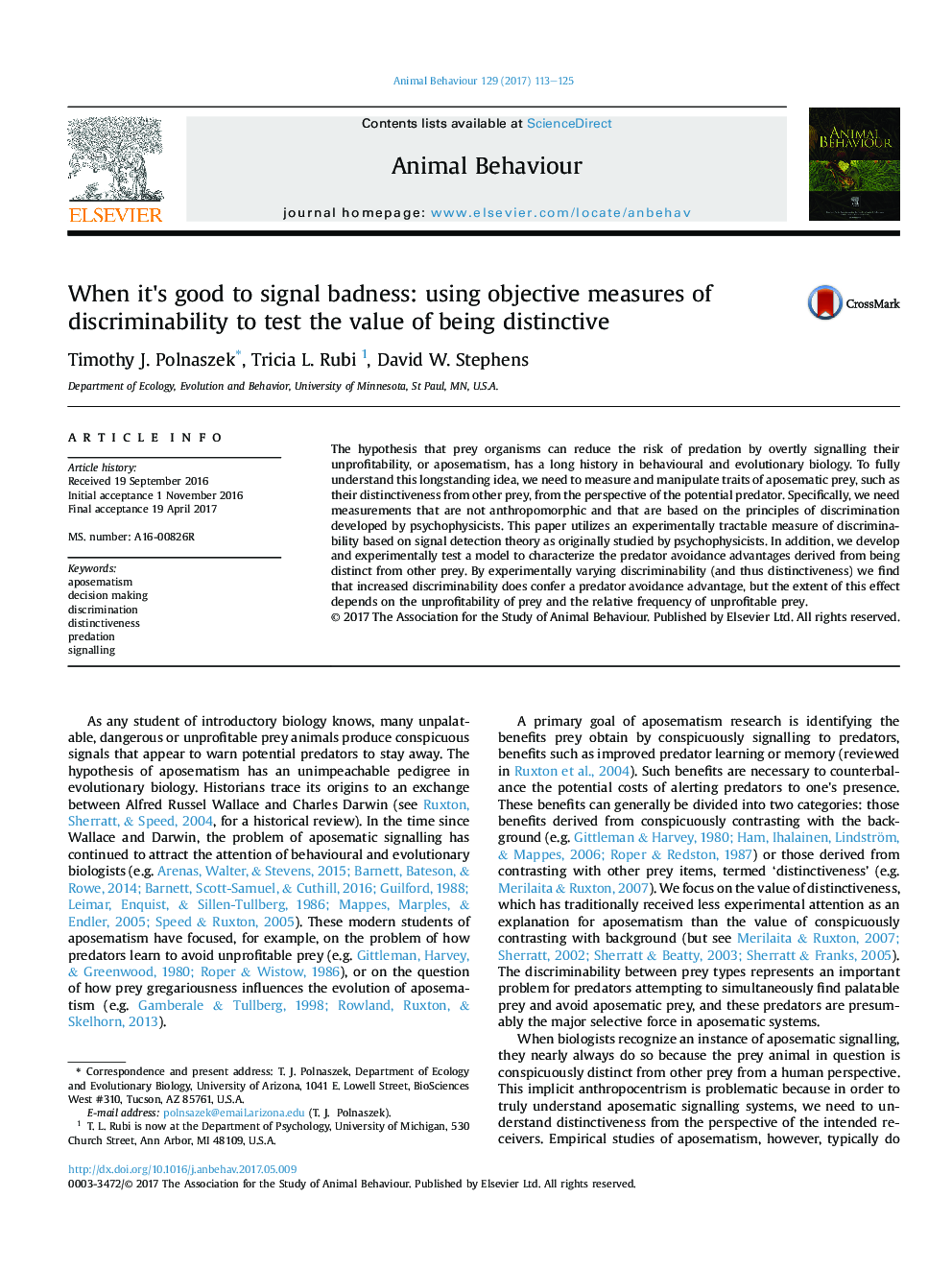| کد مقاله | کد نشریه | سال انتشار | مقاله انگلیسی | نسخه تمام متن |
|---|---|---|---|---|
| 5538485 | 1552199 | 2017 | 13 صفحه PDF | دانلود رایگان |
عنوان انگلیسی مقاله ISI
When it's good to signal badness: using objective measures of discriminability to test the value of being distinctive
ترجمه فارسی عنوان
هنگامی که خوب است بدانید: با استفاده از معیارهای عدالت پذیری برای تست ارزش بودن متمایز بودن
دانلود مقاله + سفارش ترجمه
دانلود مقاله ISI انگلیسی
رایگان برای ایرانیان
کلمات کلیدی
آپوستماتیسم، تصمیم سازی، تبعیض، تمایز شکارچیان سیگنالینگ،
ترجمه چکیده
فرضیه این است که ارگانیسم های شکار ممکن است خطر ابتلا به شکست را با آشکارا نشانه ی عدم سودآوری یا آپوسماتیسم خود، تاریخچه ی طولانی در زیست شناسی رفتاری و تکاملی داشته باشند. برای درک کامل این ایده ی طولانی مدت، ما باید از ویژگی های شکار آپوزماتیک، مانند تمایز آنها از شکار دیگر، از منظر شکارچی بالقوه، اندازه گیری کنیم. به طور خاص، ما نیاز به اندازه گیری هایی نداریم که متضاد انسان باشند و بر مبنای اصول تبعیض ایجاد شده توسط روانپزشکان باشد. این مقاله با استفاده از یک معیار سنجش پذیری تجربی قابل قبول بر اساس تئوری تشخیص سیگنال است که در ابتدا توسط روانپزشکان مورد مطالعه قرار گرفت. علاوه بر این، ما در حال توسعه و آزمایشی یک مدل برای توصیف مزایای اجتناب از شکارچیان مشتق شده از تماشای سایر شکار می کنیم. با روش تجربی متفاوت (و به این ترتیب تمایز)، متوجه می شویم که افزایش تبعیض پذیری، مزیت اجتناب از شکارچی را به وجود می آورد، اما میزان این اثر بستگی به غنیمت بودن شکار و میزان نسبی شکار غیر سودمند دارد.
موضوعات مرتبط
علوم زیستی و بیوفناوری
علوم کشاورزی و بیولوژیک
علوم دامی و جانورشناسی
چکیده انگلیسی
The hypothesis that prey organisms can reduce the risk of predation by overtly signalling their unprofitability, or aposematism, has a long history in behavioural and evolutionary biology. To fully understand this longstanding idea, we need to measure and manipulate traits of aposematic prey, such as their distinctiveness from other prey, from the perspective of the potential predator. Specifically, we need measurements that are not anthropomorphic and that are based on the principles of discrimination developed by psychophysicists. This paper utilizes an experimentally tractable measure of discriminability based on signal detection theory as originally studied by psychophysicists. In addition, we develop and experimentally test a model to characterize the predator avoidance advantages derived from being distinct from other prey. By experimentally varying discriminability (and thus distinctiveness) we find that increased discriminability does confer a predator avoidance advantage, but the extent of this effect depends on the unprofitability of prey and the relative frequency of unprofitable prey.
ناشر
Database: Elsevier - ScienceDirect (ساینس دایرکت)
Journal: Animal Behaviour - Volume 129, July 2017, Pages 113-125
Journal: Animal Behaviour - Volume 129, July 2017, Pages 113-125
نویسندگان
Timothy J. Polnaszek, Tricia L. Rubi, David W. Stephens,
